
|
 | |  |
 |
Ophthalmology Clinic
|

ΔΗΜΟΣΙΟΤΗΤΑ ΕΠΙ ΤΩΝ ΠΕΠΡΑΓΜΕΝΩΝ ΣΤΟΝ ΤΥΠΟ ΚΑΙ
ΣΤΟ ΔΙΑΔΥΚΤΙΟ
1.Συχνότητα και επιδημιολογία της παχυσαρκίας στα
παιδιά της Ν.Α. Ατιικής. Ο ρόλος του παιδιάτρου. Ο. Φιλίππου,
Μ.
Δολιανίτη, Κ. Καρανάσιου, Κ. Ρουμπάνη, Θ. Σεργεντάνης, Μ. Ζήβα-
Πετροπούλου, Σ. Παπαδάκου- Λαγογιάννη,.
Τμήμα της εργασίας δημοσιεύτηκε
στην εφημερίδα «Ο Κόσμος Του Επενδυτή», φύλλο στις 10/06/2007.
2.Ολοσέλιδη καταχώρηση στην εφημερίδα «Το Βήμα»,
φύλλο της 16/04/2010, με θέμα: « όταν οι γονείς λείπουν
τα παιδιά
παχαίνουν», όπου γίνεται λεπτομερής αναφορά στην δουλειά της κλινικής,
αναφορικά με το ιατρείο της
παχυσαρκίας και τα αποτελέσματα της
λειτουργίας του.
3.Ευχαριστήρια Επιστολή και συγχαρητήρια στους
ανθρώπους ΤΟΥ Παιδιατρικού Τμήματος του Ασκληπιείου Βούλας,
με αποδέκτες
την υπουργό κ. Μαριλίζα Ξενογιαννακοπούλου και τον Πρόεδρο της Α΄ΔΥΠΕ, κ.
Χατζή, για τις ιατρικές
και νοσηλευτικές υπηρεσίες του προσωπικού του
Παιδιατρικού τμήματος, του
Ασκληπιείου Βούλας, καταχωρημένη
στο ενημερωτικές ιστοσελίδες-
κύριοι διαδικτυακοί τόποι, την 17/03/ 2010
4.Ευχαριστήρια Επιστολή για την συνεισφορά στην Roula Papadakou at Askleipion General Hospital, από τον
Παγκόσμιο Οργανισμό Υγείας (WHO) την International Network of Health Promoting Hospitals & Health Services και
την Task Force on Health Promotion for Children and Adolescents in and by Hospitals and Health Services, με θέμα
«The Respect of
children’s Rights in Hospital: An initiative of the International Network
of Health Promoting Hospitals
and Health Services»
|
|
|

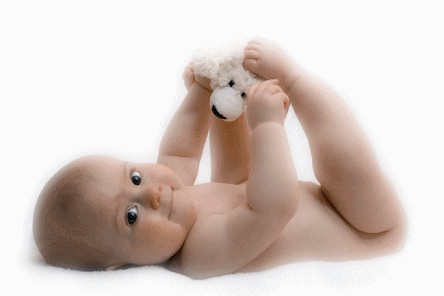
1. Do you put the crib side up whenever you leave your
Always Sometimes Never
baby in the crib?
2. Do you leave the baby alone on tables or beds, even
Frequently Occasionally Never
for a brief moment?
3. Do you leave the baby alone at home?
Frequently Occasionally Never
4. Do you keep plastic wrappers, plastic bags, and
Always Sometimes Never
balloons away from your children?
5. Does your child wear a pacifier or jewelry around his Frequently Occasionally Never
or her neck?
6. Does your child play with small objects such as beads or nuts? Frequently Occasionally Never
7. Are any of your baby-sitters younger than 13 years?
Yes Don’t know No
8. How frequently is the heating system checked where you live? Never At least once a year Every few years
9. Are your operable window guards in place? All windows Some windows None
10. Do you ever place your baby in an infant walker?
Yes No
11. Does anyone in your home ever smoke?
Frequently Occasionally Never
12. Do you have a plan for escape from your home in the event Yes No
of a fire?
13. Do you have working fire extinguishers in your home? Yes Don’t know No
14. Do you have working smoke alarms in your home? Yes No
15. Do you ever drink or carry hot liquids when holding your baby? Frequently Occasionally Never
16. Do you ever use woodstoves or kerosene heaters? Yes No
17. Do you leave the baby alone in or near a tub, pail of water, Frequently Occasionally Never
or toilet, even for a brief moment?
18. Do you have a pool or hot tub where you live? Yes No
19. Do you use a car safety seat in the car on every trip at all times? Yes No
20. Does your car have a passenger air bag? Yes No
21. Where do you place your child’s car safety seat in the car? Front Rear Front or rear
22. Does your child ride on your bicycle with you? Frequently Occasionally Never
23. Is there a gun in your home or the home where your child plays Yes Don’t know No
or is cared for?
|
|
|

Learning to ride a bike is a developmental milestone in the life of a child. The bicycle, a child's first vehicle, is a source of pride
and a symbol of independence and freedom. Yet all too often children are seriously injured, or even killed, when they fail to
follow basic bicycle safety rules. The following is a list of common bicycle safety myths, coupled with the correct information
you need to teach your children about safe bike riding.
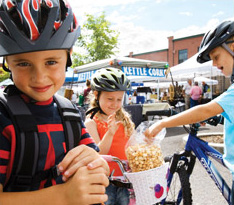
These facts will help you and your children make every bike ride safe.
Myth: My child doesn't need to wear a helmet on short rides around the neighborhood.
Fact: Your child needs to wear a helmet on every bike ride, no matter how short or how close to home. Many accidents
happen in driveways, on sidewalks, and on bike paths, not just on streets. In fact, the majority of bike crashes happen near
home. A helmet protects your child from serious injury, and should always be worn. And remember, wearing a helmet at all
times helps children develop the helmet habit.
Myth: A football helmet will work just as well as a bicycle helmet.
Fact: Only a bicycle helmet is made specifically to protect the head from any fall that may occur while biking. Other helmets
or hard hats are made to protect the head from other types of injury. Never allow your child to wear another type of helmet
when riding a bike.
Myth: I need to buy a bicycle for my child to grow into.
Fact: Oversized bikes are especially dangerous. Your child does not have the skills and coordination needed to handle a
bigger bike and may lose control. Your child should be able to sit on the seat, with hands on the handlebars, and place the
balls of both feet on the ground. Your child's first bike should also be equipped with footbrakes, since your children's hand
muscles and coordination are not mature enough to control hand brakes.
Myth: It's safer for my child to ride facing traffic.
Fact: Your child should always ride on the right, with traffic. Riding against traffic confuses or surprises drivers. Almost
one fourth of bicycle-car collisions result from bicyclists riding against traffic.
Myth: Children shouldn't use hand signals, because signaling may cause them to lose control of their bikes.
Fact: Hand signals are an important part of the rules of the road and should be taught to all children before they begin
to ride in the street. They are an important communication link between cyclists and motorists. Any child who does not
have the skills necessary to use hand signals without falling or swerving shouldn't be riding in the street to begin with.
Many accidents involving older children occur when they fail to signal motorists as to their intended actions.
Myth: Bike reflectors and a reflective vest will make it safe for my child to ride at night.
Fact: It's never safe for your child to ride a bike at night. Night riding requires special skills and special equipment. Few
youngsters are equipped with either. Never allow your child to ride at dusk or after dark.
Myth: I don't need to teach my child all of this bicycle safety stuff. I was never injured as a child. Biking is just meant
to be fun.
Fact: Riding a bike is fun – if it's done safely. Unfortunately, most people don't realize hundreds of thousands of children
are seriously injured each year in bicycle falls. Worse still, more than 600 children die from them each year. While you may
have been lucky enough to survive childhood without a serious bicycle-related injury, you shouldn't count on luck to protect
your child.
Teach your child these basic safety rules:
Wear a helmet.
Ride on the right side, with traffic.
Use appropriate hand signals.
Respect traffic signals.
Basic safety measures like these can keep bicycle riding enjoyable and safe for your child.
http://www.healthychildren.org/English/safety-prevention/at-play/pages/Bicycle-Safety-Myths-And-Facts.aspx |
| |
|
|

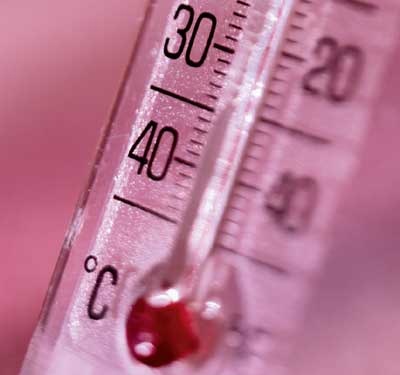 Your child's normal temperature will vary with his age, activity, and the time of day. Your child's normal temperature will vary with his age, activity, and the time of day.
Infants tend to have higher temperatures than older children, and everyone’s temperature
is highest between late afternoon and early evening and lowest between midnight and early
morning.
Ordinarily, a rectal reading of 100.4 degrees Fahrenheit (38 degrees Celsius) or less, or an oral
reading of 99 degrees Fahrenheit (37.2 degrees Celsius) or less, is considered normal, while
higher readings indicate fever.
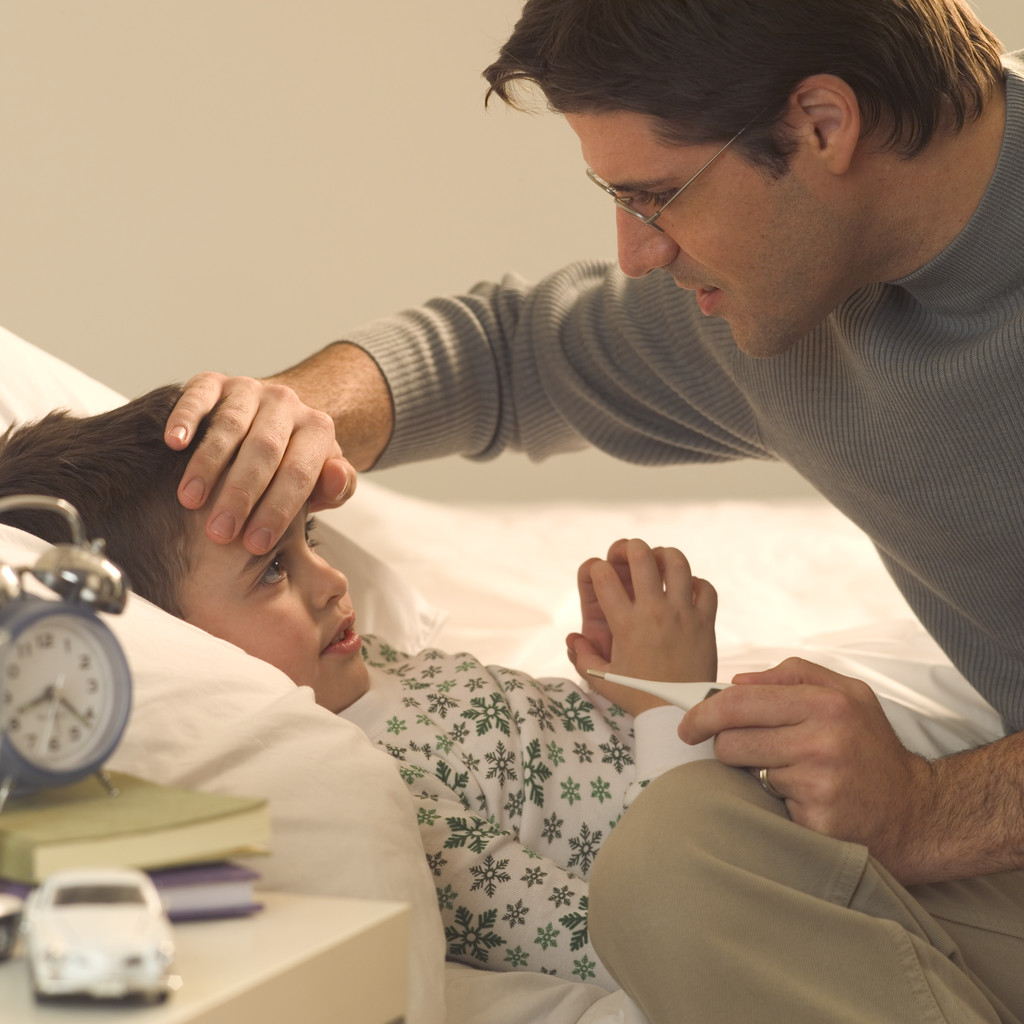 By itself, fever is not an illness. Rather, it is a sign or symptom of sickness. In fact, usually it is a By itself, fever is not an illness. Rather, it is a sign or symptom of sickness. In fact, usually it is a
positive sign that the body is fighting infection. Fever stimulates certain defenses, such as the
white blood cells, which attack and destroy invading bacteria.
The fever may actually be important in helping your child fight his infection. However, fever can
make your child uncomfortable. It increases his need for fluids and makes his heart rate and
breathing rate faster. Fever most commonly accompanies respiratory illnesses such as croup or
pneumonia, ear infections, influenza (flu), severe colds, and sore throats. It also may occur
with infections of the bowel, blood, or urinary tract, inflammation of brain and spinal cord
(meningitis), and with a wide variety of viral illnesses.
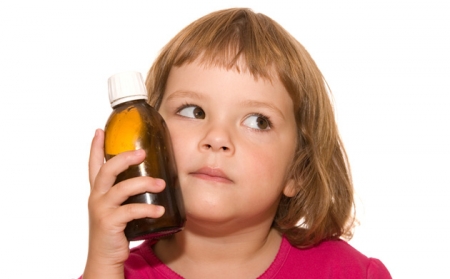 In children between six months and five years, fever can trigger seizures, called febrile In children between six months and five years, fever can trigger seizures, called febrile
convulsions. These convulsions tend to run in families, and usually happen during the first few
hours of a febrile illness. Children may look “peculiar” for a few moments, then stiffen, twitch,
and roll their eyes. They will be unresponsive for a short time, and their skin may appear to be
a little darker than usual during the episode. The entire convulsion usually lasts less than one
minute, and may be over in a few seconds, but it can seem like a lifetime to a frightened parent.
Although uncommon, convulsions can last for up to fifteen minutes or longer. It is reassuring to
know that febrile convulsions almost always are harmless—they do not cause brain damage, nervous system problems,
paralysis, mental retardation, or death—although they should be reported promptly to your pediatrician. If your child is
having trouble breathing or the convulsion (also referred to as a seizure) does not stop within fifteen minutes, call 911.
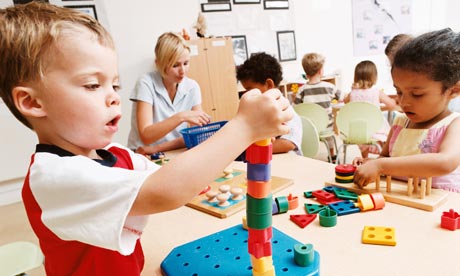 Children younger than one year at the time of their first simple febrile convulsion have Children younger than one year at the time of their first simple febrile convulsion have
approximately a 50 percent chance of having another such seizure, while children over one year
of age when they have their first seizure have about a 30 percent chance of having a second one.
Nevertheless, febrile convulsions rarely happen more than once within a twenty-four-hour
(one-day) period. Although many parents worry that a febrile convulsion will lead to epilepsy,
keep in mind that epileptic seizures are not caused by a fever, and children with a history of
feverrelated convulsions have only a slightly higher likelihood of developing epilepsy by age seven.
A rare but serious problem that is easily confused with fever is heat-related illness, or heatstroke. This is not caused
by infection or internal conditions, but by surrounding heat. It can occur when a child is in a very hot place—for example,
a hot beach in midsummer or an overheated closed car on a summer day. Leaving children unattended in closed cars
is the cause of several deaths a year; never leave an infant or child unattended in a closed car, even for a few minutes.
Heatstroke also can occur if a baby is overdressed in hot, humid weather. Under these circumstances, the body
temperature can rise to dangerous levels (above 105 degrees Fahrenheit [40.5 degrees Celsius]), which must be reduced
quickly by cool-water sponging, fanning, and removal to a cool place. After the child has been cooled, he should be
taken immediately to a pediatrician or emergency room. Heatstroke is an emergency condition.
|
|
| | << Start < Previous 11 12 13 14 15 16 17 18 19 20 Next > End >>
| | Results 118 - 126 of 327 |
|  |
 | |  |
|
IT Asklepieio Voulas
Number of Visitors
| |
|







